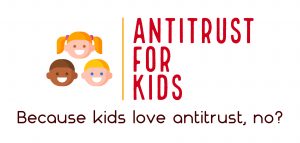Author: Luis Blanquez
Two of the main pillars from the Biden Administration Antitrust Policy in 2023 have been an aggressive merger enforcement agenda and its crusade against Big Tech and vertical integration.
On the merger side, the Department of Justice (DOJ) and Federal Trade Commission (FTC) have published new Merger Guidelines (see also here) and proposed new changes to Hart-Scott-Rodino Act (HSR) notification requirements (see also here.) In addition, both antitrust agencies have challenged more mergers in 2022 and 2023 than ever before. In a letter from November 2023 responding to questions from Rep. Tom Tiffany, R-Wis., FTC Chair Lina Khan stressed the fact that:
“a complete assessment of the FTC’s success in stopping harmful mergers reveals that of the 38 mergers challenged during my tenure as Chair, 19 were abandoned, another 14 were settled with divestitures, and two are pending a final outcome.”
This includes key acquisitions such as the Nvidia/Arm Ltd or Meta/Within, among many others. And the FTC is showing no signs of slowing down this aggressive approach. Another recent example of a merger challenge by the DOJ is the Live Nation/Ticketmaster’s complaint.
But despite the FTC’s Chair confidence and the recent new challenge by the DOJ, this hasn’t been an easy path for the antitrust enforcers. Courts in the US have pushed back several of the agencies’ extreme challenges and new theories, such as in the Microsoft/Activision, (see also here, here, and here.)
On the Big Tech front things do not look much better. Both agencies have filed major illegal monopolization cases, sometimes together with State AGs, against Apple (Smartphones), Google (Google Search and Google Ad Technology), Amazon (Online Retail), and Meta (Instagram/WhatsApp––see also here––, and Within acquisitions.)
In other words, if you work in Big Tech, forget about acquiring an AI startup, unless you want to go through a long and hostile review process. This is having a serious impact on the most disruptive and growing industry we’ve seen in years.
The “Magnificent Seven” Tech Companies
The ascendency of Apple, Microsoft, Nvidia, Tesla, Meta, Alphabet and Amazon, the so-called “Magnificent Seven” tech stocks––is indicative of “a fundamental shift”, primarily propelled by advancements in AI. Currently, the top seven tech stocks have not only accounted for about half of the gains in the entire S&P 500, but also contributed to over a quarter of the index’s total market capitalization. These companies are not merely riding the wave of current technologies but actively shaping the future of AI. They collectively gather most of the market cap in the industry.
But until we see a shift on the current enforcers’ antitrust policy against acquisitions involving Big Tech, it doesn’t matter how well these companies perform. Why? Because as a startup in the tech industry (and really in any industry), your main goal is to either try to eventually go public through an IPO––if you become big enough––, or rather look for one of the Big Tech companies to acquire you. But with the antitrust agencies’ current appetite to block such transactions, Venture Capital companies and investors in the AI industry are thinking twice before risking their money on a startup, unless they specifically know that company is going public. Otherwise, the risk that VCs and investors see to get the deal blocked by either the FTC or DOJ is just too high, regardless of the potential these startups might have. And let’s be honest, the number of companies that make it to that level is already extremely low.
First, this is clear evidence of how such an aggressive and disproportionate approach to acquisitions involving Big Tech is currently hindering innovation in the most relevant and disruptive industry we’ve seen in years. But this is a topic for another article.
Second, what I want to discuss in this article is how because of such an extreme approach from the Biden Administration, Big Tech are starting to develop new and creative strategies to get involved in the AI industry, without having to acquire any startups and face the antitrust agencies. At least not until now, because this has already raised some eyebrows at both the DOJ and FTC.
Microsoft/Inflection
The first of these deals involves Microsoft and Inflection.
Backed by Microsoft, Nvidia and billionaires Reid Hoffman, Bill Gates and Eric Schmidt; ex-DeepMind leader Mustafa Suleyman––now Google’s main AI lab, and Reid Hoffman, who co-founded LinkedIn, started Inflection in 2022, claiming to have the world’s best AI hardware setup.
Inflection thesis was based on AI systems that can engage in open-ended dialogue, answer questions and assist with a variety of tasks. Named Pi for “personal intelligence,” Inflection’s first release helped users talk through questions or problems over back-and-forth dialog it then remembers, seemingly getting to know its user over time. While it can give fact-based answers, it’s more personal and “human” than any other chatbot.
In March of this year, Microsoft announced the payment of $650 million to inflection. $620 million for non-exclusive licensing fees for the technology (meaning Inflection is free to license it elsewhere) and $30 million for Inflection to agree not to sue over Microsoft’s poaching, which includes co-founders Mustafa Suleyman and Karén Simonyan. Suleyman will run Microsoft’s newly formed consumer AI unit, called Microsoft AI–– a new division at Microsoft that will bring together their consumer AI efforts, as well as Copilot, Bing and Edge––, whereas Simonyan is joining the company as a chief scientist in the same new group. Inflection will host Inflection-2.5 on Microsoft Azure. It will be also pivoting away from building the personalized AI chatbot Pi to become an AI studio helping other companies work with large language model AI.
So here is where it gets interesting. Microsoft didn’t formally need to make an offer to acquire Inflection. In other words, technically Inflection remains an independent company. But the antitrust agencies seem to disagree and have started asking themselves the following questions.
First, if the key people, money and technology have all left the company to go to Microsoft, what’s really left in Inflection to still be considered as a competitor in the market?
Second, could this qualify as a change in control according to 16 C.F.R. §801.1(b)? What about a file-able acquisition of just “assets”––a term currently undefined by the HSR statute and regulations?
And third, does this move create a “reverse acqui-hire” transaction, a practice which is becoming very popular in the AI industry? The so-called “acqui-hires,” are transactions in which one company acquires another with the main purpose to absorb key talent. But what’s going on in the AI industry is not quite the same. Big Tech are acquiring key employees––such as Suleyman and Simonyan with their core teams in this case––, while licensing technology, leaving the targeted company still functioning independently––so no HSR filing requirement is apparently triggered. This is not the first time we’ve seen this scenario in the AI industry. Last month, Amazon poached Adept’s CEO and key employees, while getting a license to Adept’s AI systems and datasets.
But the antitrust enforcers have started to ask themselves whether Inflection and Adept are still real competitors in the AI market. The FTC has already sent subpoenas to both parties in the Microsoft/Inflection transaction, asking for information about a potential gun-jumping scenario: whether the $650 million deal may qualify as an informal acquisition requiring previous government approval. In the case of Amazon/Adept, the FTC has also decided to start an investigation and asked for more information.
OpenAI, Nvidia and Microsoft
The FTC and DOJ are finalizing an agreement to split duties to investigate potential antitrust violations of Microsoft, OpenAI, and Nvidia.
According to Politico, the DOJ will lead the Nvidia investigation, and its leading position in supplying the high-end semiconductors underpinning AI computing, while the FTC is set to probe whether Microsoft, and its partner OpenAI, have unfair advantages with the rapidly evolving technology, particularly around the technology used for large language models. At issue is the so-called AI stack, which includes high-performance semiconductors, massive cloud computing resources, data for training large language models, the software needed to integrate those components and consumer-facing applications like ChatGPT.
 The Antitrust Attorney Blog
The Antitrust Attorney Blog











